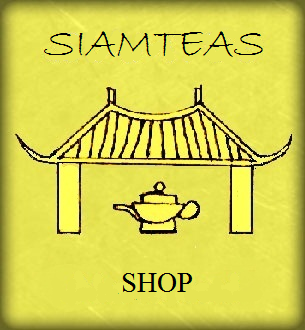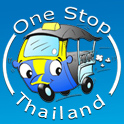Healthy Tea – Healthy Environment
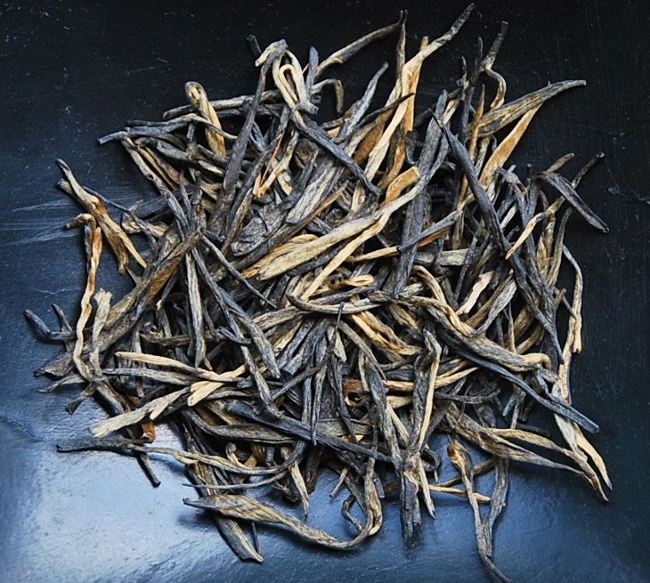 Artisan Yunnan Black & Golden Needle – healthy and environment-friendly grown
Artisan Yunnan Black & Golden Needle – healthy and environment-friendly grown
During the past decades, the increasing industrialization and economization of production processes in the agricultural sector have – in combination with the innovation and of dedicated chemical aids (insecticides, herbicides, fungicides and artificial fertilizers) – fundamentally altered the overall picture of tea cultivation. The increased availability and lower prices of (mass) teas yielded through industrial processes achieved by means of such modern “blessings” take their toll especially in the areas health and environment. Residues of the chemical substances used to protect tea plants against pests (pesticides / insecticides), kill weeds (herbicides), eliminate fungal infestation and fertilize soils (artificial fertilizers) get into the tea plant via soil and water and/or stickcantly increased during the past years, especially in Western countries such as Germany and other EU countries (with the US still having to catch up). I therefore feel an urge to provide our customers with a detailed overview of the exact guidelines we apply the sourcing and offer of our teas in order to offer healthy tea only. However, in to the tea leaves. On the same ways, the get into the environment, i. e. accumulate in soil and ground water and become part of the eco cycle this way. Against this backdrop, the awareness of many tea drinkers and tea lovers for the health and environmental aspects tied to tea consumption has signifiorder to do this in a comprehensible and transparent way, it is necessary to first address some terms and concepts that are essential to this in more detail, and to shine some light on the backgrounds, before which our overall attitude on the subject has emerged and our resulting policy on pesticide residues on our teas has been developed.
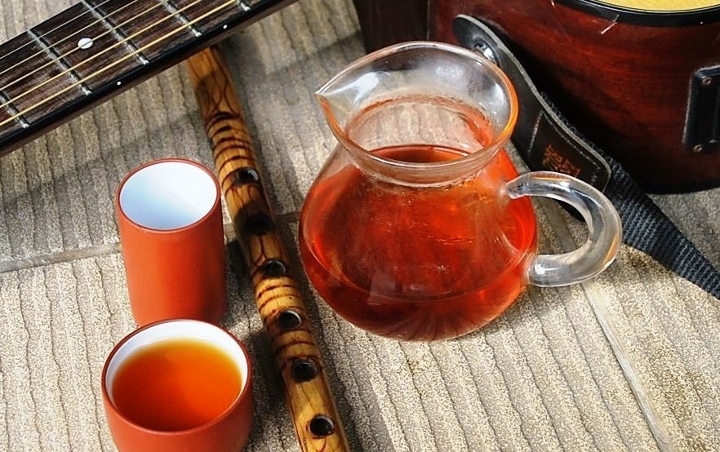 Artisan Yunnan Black & Golden Needles from “semi-wild” cultivation
Artisan Yunnan Black & Golden Needles from “semi-wild” cultivation
In the nature…
In the nature, there’s a well-leveled balance prevailing between all “participants“, i. e. animals (including insects) and plants live either directly or indirectly from other animals and plants, among them species that are used by humans for consumption or further processing, such as the tea plant. This way, nature creates an interdependency between the species represented in an eco-system, which provide each other mutually with vital or quality/taste-relevant nutrients and other factors (e. g. shade). At this, the said balance ensures that all participants benefit in an appropriate way and degree, i. e. there is a tendentiously perfect symbiosis prevailing between the animal and plant species represented in a natural (or „wild“) ecosystem. They do not only live with each other, but also from each other, without creating any substantially damaging effects on the other participating species, make them unusable for other users within or from outside of the system (e. g. humans), or even only deteriorate their quality/qualification for such utilization. In contrary, in the nature, the individual species represented in an ecosystem will usually always make a contribution to the system that goes beyond their own interests, e. g. in terms of proliferation (for example: pollen transport through insects) or in terms of refining a natural product (for example: bees and honey). So, in nature tea trees and bushes are growing in perfect harmony with a great variety of other species that are contributing to and coining the character – and taste – of the tea yielded from them.
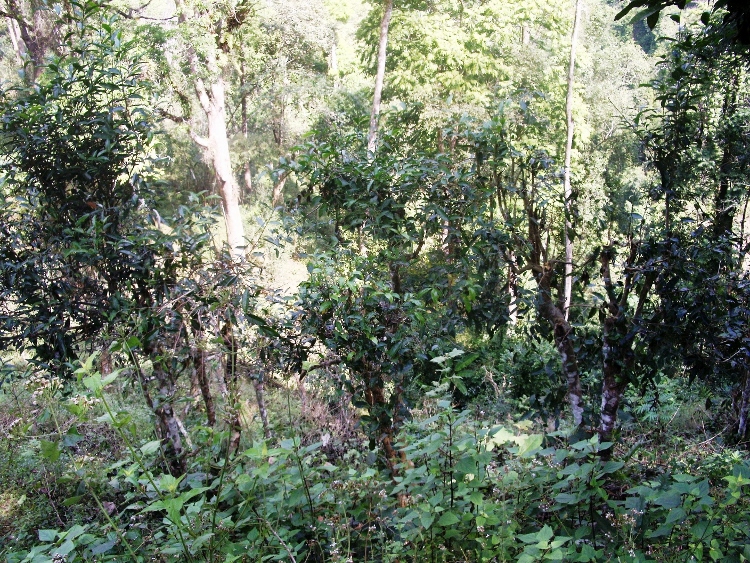 Wild tea trees in north Thailand, growing in perfect biodiversity
Wild tea trees in north Thailand, growing in perfect biodiversity
Human intervention…
When man intervenes in such ecosystem in order to exploit it for its own use or profit, for example by picking tea leaves from tea plants, then it is important that this intervention takes place in a way that constitutes or causes no substantial disturbance of the system and its balanced condition, as otherwise it will respond by diminished returns, possibly quality-wise, possibly quantity-wise, or possibly both.
Monoculture
Cultivation in monoculture is one profound intervention in the natural ecosystem. the clearing of ancient forest reserves in favor of monocultural tea gardens, where rows of small tea bushes stretch in parallel across wide areals , is a shared characteristic of all origin countries of our tea, whether China, Japan, or north Thailand. In all of these countries, just like in all other major tea cultivation regions of the world, such India, Sri Lanka or Kenia, the “conventional” tea cultivation in monoculture is the widely prevailing form of cultivation.
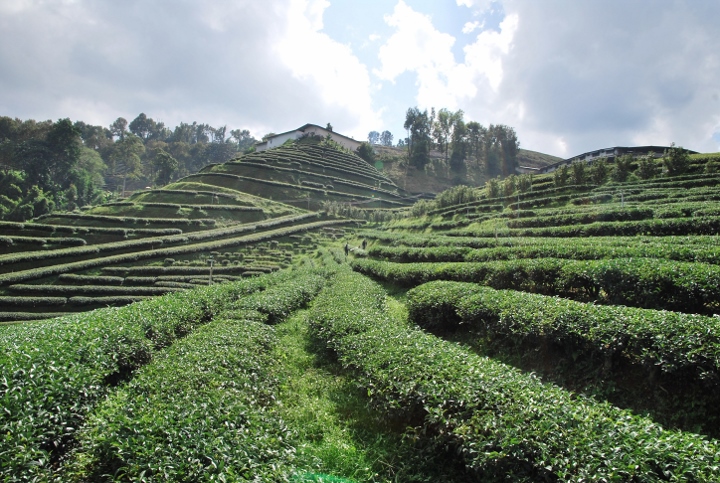 Tea cultivation in monoculture: visually quite appealing…
Tea cultivation in monoculture: visually quite appealing…
The exclusive presence of one single plant species in a monoculturally cultivated areal besides the disappearance of other species leads to a disproportionate increase of specific insects, fungi and other species that live solely or mainly from the tea plant. In a monocultural setting, these species will – caused by the relative over-prevalence of tea plants and the absence of alternative food and nutrition sources easily to so-called “pests”, i. e. their activity leaves the tea plants in a poor condition, lowering the value of their produce or even making it unexplainable for us. Another consequence of the absence of other species is the depletion of soils and the need for additional, often artificial fertilizing.
What are Pesticides?
Pesticides in the narrower sense are substances to protect agricultural crops, in our case the tea plant, from pest infestation. However, in official language use, for example in that of the EU pesticide residue regulation for tea or that of relevant bioanalysis of food labs, the term means – beyond that narrow definition – all insecticides, herbicides, fungicides and artificial fertilizers. The following deliberations are based on the latter, wider pesticide definition.
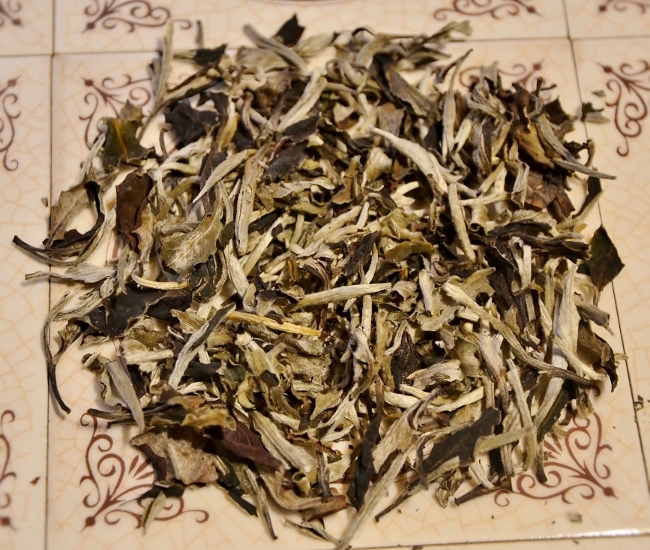 Ancient Tree White Moonlight Tea, from old tea trees, cultivated in biodiversity
Ancient Tree White Moonlight Tea, from old tea trees, cultivated in biodiversity
Reasons for the use of pesticides in tea cultivation
The cultivation in monoculture is the standard in all major tea producing countries. It enables the controlled cultivation of tea, organized according to industrial and economic principles to cover for a mass need at lowest possible prices. The direct negative effects of monocultures are well-known: the loss of natural biodiverse areals and the destruction of other species‘ habitats coming along with that, one-sided depletion of soils, development of pest overpopulations, just to name the most obvious ones. Each of these effects is directly related to the need for the use of pesticides:
- Herbicides are used to prevent nature from regaining areals used for monocultural tea cultivation.
- Fungicides are used to prevent fungus infestations promoted by the one-sided vegetation.
- Insecticides are used to keep off or kill insects that are living of the tea plant ant that develop oversized populations due to the relative over-prevalence of the tea plant in the monoculturally organized tea garden, so that they become “pests”.
- Artificial fertilizers are used to compensate for the one-sided depletion of soils by adding artificially produced nutrients.
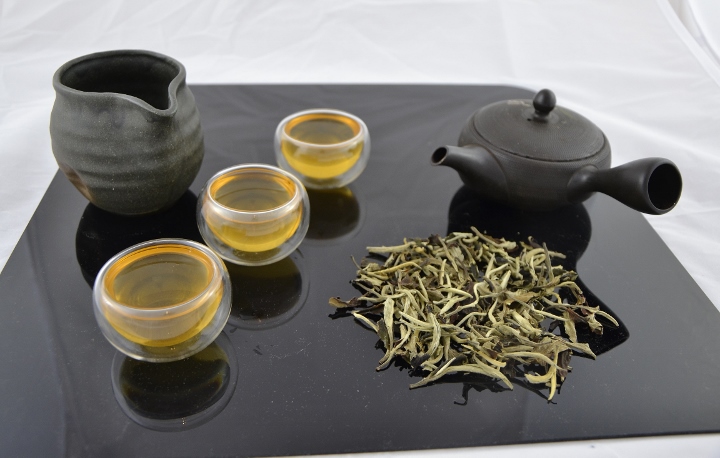 Ancient Tree White Moonlight Tea – healthy and environment-friendly grown
Ancient Tree White Moonlight Tea – healthy and environment-friendly grown
Downsides of pesticide use in tea cultivation
How hazardous pesticide residues really are for our health is a topic that has been and still is much discussed. A clear general statement that would be valid for all such substances can hardly be made here. We do know as a fact, though, that quite a range of these substances that had been used over long periods before, have at some point been outlawed because of overwhelming evidence of their hazardous effects. Examples for this would be the now prohibited insecticide E605, or the herbicide Glyphosate that has come under massive fire just recently. A general assumption that is more or less based on common sense is that many or the most of these substances could possibly be harmful to our health, if getting into the human body.
One argument regarding the health-hazardous effects of pesticides in tea often held up by advocates of pesticide use in tea cultivation is that a majority of the pesticides used and responsible for residues are not water-soluble and that these substances therefore never get into our system, as we usually don’t eat the tea leaves, but filter them out of our tea by means of a sieve, and consequently are not representing a risk to our health. As true and reassuring this argument might be, the awareness of pesticides in our tea will still certainly not contribute to a higher perceived value of a tea. Many of us drink tea especially or also because it is considered a healthy beverage, a perception that will hardly remain completely untouched by the awareness of significant pesticide residues in our tea.
Another downside of excessive pesticide use are the effects on our environment. Ecosystems are capable of „absorbing“, or rather degrading pesticides that have entered the soil and groundwater up to a certain degree of concentration. Is the system contaminated by too high concentrations over too long periods, then the ecological balance will shift and the properties of the system’s individual elements – with soil and water being first – will change. This way, the excessive use of pesticides not only lead to residues at and in the tea leaf that could possibly be hazardous to human health, but will also leave its marks in soil and water for years to come, thereby affecting the environment as a whole.
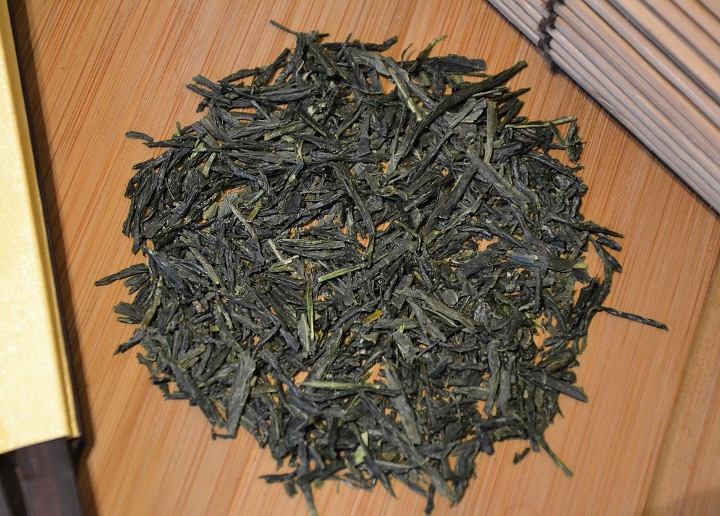 Green Teas from Japan, cultivated in monoculture, but free of pesticides
Green Teas from Japan, cultivated in monoculture, but free of pesticides
What is the EU Pesticide Residue Regulation for Tea?
Which pesticides and in which concentrations exactly their residues are considered as safe, i.e. as non-hazardous to human health, in the EU is regulated by the EU pesticide residue regulation. This defines maximum limits for all substances, whose presence in a tea in whatever concentration does not principally rule out the marketability of that tea in the EU. Not considered as marketable in the EU are teas exceeding these statutory limits.
There is a lot of discussion about whether the maximum limits defined in the residue regulation are too high – or in contrary: too low – with a broad spectrum of advocated opinions. In a worldwide comparison of standards – for example compared to the relevant regulations in the US – the European requirements are among the strictest, and we are convinced that teas that meet the requirements of the EU pesticide residue regulation for tea, can principally be enjoyed without fear of health hazards.
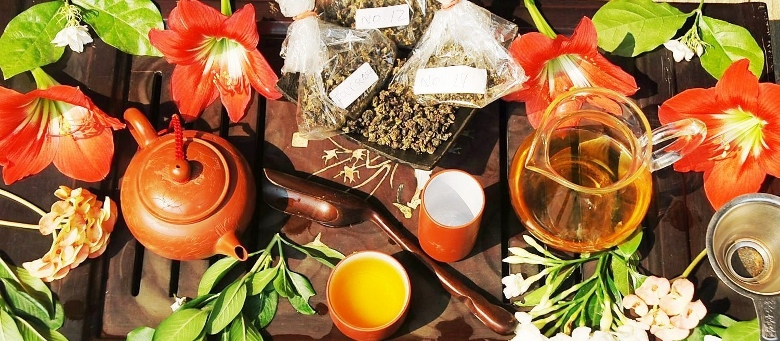 Our Thai Oolongs: well below EU-permitted residue limits
Our Thai Oolongs: well below EU-permitted residue limits
In Germany, compliance with the requirements of the EU pesticide residue regulation is monitored by the customs authorities for all tea imported from outside of the EU (thereby pretty much all tea). Of course, not all tea imports are checked and/or subjected to thorough testing. However, this is done on a random sample basis. For example, currently every second or third tea shipment coming in from China undergoes some degree of checking, up to individual teas being sent for thorough testing in an acknowledged German food lab by German customs, with us bearing the cost for such tests
German law stipulates that tea traders in Germany are obliged to ensure the marketability of their teas according to EU regulations. This means, if a tea is identified as non-marketable in the EU due to excess levels of pesticides detected, then the trader will not only bear the loss of that shipment, but will also have to expect further checks on their teas.
What is “Bio”? – The German / EU Bio Seal
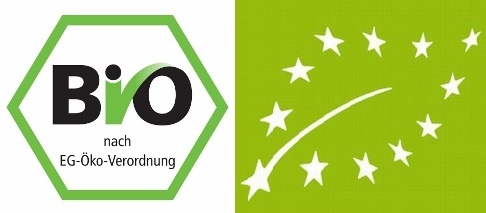 German / EU Eco (“Bio”) Seal (click link/picture for Wikipedia entry)
German / EU Eco (“Bio”) Seal (click link/picture for Wikipedia entry)
In Germany, the term “Bio” (= “organic” is protected under German law. Only products, and thereby only teas that are certified and legitimately labeled with one or both of these seals, may be referred to as Bio. The requirements of these seals are stipulated in a set of rules mainly focusing on the absence of pesticide residues as the main requirement for a tea in order to qualify for the seal. This means, if you buy a tea labeled with the German or EU “Bio Seal”, then you should be able to rely on that tea being free of pesticides. However, as regarding the greater environmental context, both Bio seals leave a lot to be desired. Though “sustainability” and general environment-friendliness of cultivation and production are formulated in the seals’ body of rules as secondary goals, these statements have no mandatory character, i. e. though the seals declare their advocacy for environment-friendly cultivation, they do not make this a factual requirement for awarding the seal.
“Bio” vs. “Environment-friendly” – not the same thing in Germany
In German linguistic folklore, the perception and use of the terms ”Bio” and “environment-friendly” are widely identical, hinting to an underlying assumption that a product that is “bio” will automatically also be environment-friendly, and the other way around. However, that is not fully true, as an agricultural product, such as in our case tea, can in fact be free of pesticides and still have been grown in a way that is far from actually being environment-friendly. Examples for this are the clearing of vital forest reserves in order to create the needed acreage and all other known adverse effects of monoculture on environment and ecosystems. In turn, a tea grown in highest biodiversity or even wildly picked tea dos not necessarily have to be free of pesticides, for example, where soils are suffering from legacy contamination or in the case of spotty use of pesticides in wild, semi-wild or biodiverse areas. Nevertheless, the organic cultivation of tea will tendentiously be a lot more environment-friendly than the non-organic one, if only because the contamination of the environment with the mentioned substances is omitted, while in the opposite case wild and biodiversely grown teas will rarely show any significant pesticide residues, as the use of pesticides in intact ecosystems is widely superfluous and because tea plants here are comparably difficult to access, so treatments would come with great efforts only as well as producing pointless collateral damage. A distinction between the two concepts still makes sense, especially because the motivations underlying their practice and habit are different ones: while striving for organic („Bio“) quality put the primary focus on the direct effects of hazardous substances on the individual consumer’s health, the pursuance of environment-friendly cultivation is the product of a wider facetted and longer term perspective that the health of consumers will ultimately also benefit from.
In our understanding and the resulting “SiamTeas Health and Environment Policy“ (see below), both perspectives melt into one (holistic) concept. This means, we feel obliged to be committed to our customers` health in a direct sense on the one hand, but also acknowledge the responsibility to preserve our environment in terms of maintaining and actively creating such ecological frame conditions as are vital for the sustainable cultivation of healthy tea. Our greatest sympathy therefore is with wild teas and teas grown in biodiverse environments, and we strongly believe that the promotion and further development of biodiverse cultivation methods – alongside the preservation of existing natural wild areals – are the best option for the future of tea cultivation.
 Our Bi Luo Chun Green Tea – healthy tea from ancient tradition of biodiverse tea cultivation
Our Bi Luo Chun Green Tea – healthy tea from ancient tradition of biodiverse tea cultivation
Advantages of biodiverse tea cultivation methods
Simply put, the great advantage of biodiverse tea cultivation methods is that these allow for pesticide-free and perfectly environment-friendly cultivation at the same time. The balance prevailing in a biodiverse ecosystem prevents individual species from developing significantly disproportional overpopulations, thereby becoming “pests”. It provides for the repletion of nutrients in the soil and has a natural capacity to absorb and cope with external influences such as human interventions, for example in the form of picking tea leaves. And: by maintaining a specific set of conditions, it ensures that the characteristics of a tea – and thereby its quality – will remain consistent in a long-term perspective.
Biodiverse ecosystems that are 100% perfect are only created by nature itself. To the extent that natural (wild) areals are ”exploited” and adapted to economical requirements by humans, to that extent an areal is no longer wild or natural. In the last consequence, this means that actually there is no such thing as “wild tea”, because as soon as tea leaves are picked a human intervention in the system is taking place, so that this cannot be considered as completely natural anymore. Moreover, tea leaves are picked on a regular basis (once to several times per year), which means the intervention doesn’t take place just once in a while, but rather on a consistent basis. To remain realistic, we therefore refer to a tea as “wild”, if it is picked from tea plants that – apart from the regular picking of tea leaves – grow in a widely untouched areal.
Against the backdrop of a consistently growing world population and the growth pressure immanent to our global economic system, untouched wild areals are worldwide rapidly disappearing, so that many types of tea today are no longer available from real wild growth in their respective regions of origin. The very major part of tea produced and consumed worldwide therefor comes from controlled monoculture, with all of its economic benefits and health- and environment-related downsides. In our opinion, biodiverse cultivation offers an arguably costlier and more complex and demanding, but in turn healthier and much more environment-friendly alternative to the monocultural cultivation. This can be in the form of gentle, low-intervention cultivation and preservation of former wild areals or in the form of the targeted creation of biodiversified, close-to-nature areals on former wasteland or monoculturally used areas. We believe that it is the best option to consistently align our direct health interests with those of a healthy environment, and we therefor support relevant initiatives through the targeted sourcing of tea from biodiverse cultivation and through offering the results of such targeted sourcing in Siam Tea Shop, wherever prices and organizational aspects will allow for this.
 White Peony from biodiverse cultivation – big taste and high potential thanks to pure nature
White Peony from biodiverse cultivation – big taste and high potential thanks to pure nature
Which options are available for tea retailers to ensure a tea’s compliance with the pertaining EU regulation and/or ‘pesticide-free‘ standard?
Now, how will a retailer, such as SiamTeas for example, know, whether a tea is indeed free of pesticides or meets the requirements for marketability in the EU? For this, there are basically three options available:
- Certification on producer/wholesaler level: in order to increase their market opportunities, many – in particular larger-sized and more capital-heavy – producers and wholesalers have their teas tested and certified by acknowledged relevant institutions. This will save tea retailers a lot of expenses and own initiative, while both the producers/wholesalers and the retailers will be on the safe side this way, so to speak. The big disadvantage of this option is that smaller-sized producers and intermediate traders are not able to provide for such testing and certification of their teas because of the high cost involved, so their tea will have great problems to enter the German and/or EU market at all. We know good examples for this from our own experience. So, nearly all of our Thai teas (except of ShanTea) come from one relatively small family operation, where affording such certification would be completely out of scope, cost-wise. For such teas, we therefore have no other option available as financing and having performed
- Tests in own initiative with renowned bioanalysis and food labs: from time to time, we send samples of individual teas from our Thai producer partner for testing on EU marketability to a renowned German bioanalysis laboratory. The results of these tests have so far always been to our full satisfaction. Though we cannot attest the teas of our producer partner in north Thailand to be completely free of pesticides, detected residues have always been found to be well below levels permitted in the EU and the marketability of our Thai teas in the EU confirmed. Of course, samples are always just samples, and for cost reasons there is no way for us to have each tea from our Thai producer partner tested each year. In the “grey zone” arising from this, the oldest and most natural quality guarantee comes into effect, namely the
- Foundation of trust with the supplier: generally, good faith towards tea producers/suppliers might rather not be a recommendable basis for the reliable assessment of the use of pesticides on tea and resulting residues. However, there are exceptions to this. After years of close cooperation, I maintain a quasi-familial relationship to our producer partner in north Thailand, and I’ve spent so much time in their tea gardens that I can – together with the mentioned sample tests conducted from time to time – can be reasonably reassured no undesirable surprises are hiding between such samplings. During these years, our producer partner has always – even where this has been on the touchstone – been proving to be an ethically correct partner with a true and honest passion for growing and producing natural, healthy tea. Control might be better, but trust is still good, and without a certain level of trust, even with the highest level of control we wouldn’t be able to offer you our wonderful teas from north Thailand.
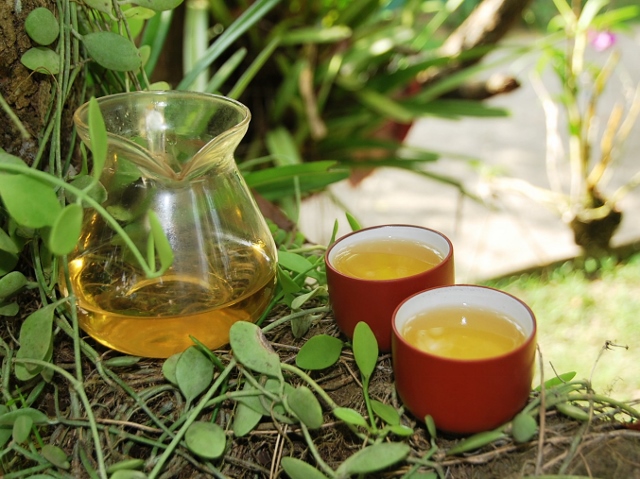 White Peony grown in biodiversity – in harmony with nature
White Peony grown in biodiversity – in harmony with nature
Conclusion / Future Perspective: Chances and Obstacles of Biodiverse Tea Cultivation
After we have identified the biodiverse, as close as possible to nature cultivation as THE health- an environment-friendly alternative for tea cultivation in the future, we have to ask the question, what chances to be implemented on any wider scale this idea really has, and which obstacles might be in the way.
One problem certainly is the “awareness problem”. Many people perceive pesticide residues on tea as a “necessary evil”, others are content with their tea posing no threat to their health, whether in the context of any stipulated marketability with defined residue maximum levels or in the form of demanding their teas to be completely free of pesticides. Still, only a minority of tea consumers is ready to pay the price inevitably related to truly environment-friendly teas. Another not to underestimate component of the “awareness” problem is the lack of awareness for the value of health and environment in the producer countries.
Another problem is the lack of relevant know-how. The environment-friendly cultivation of tea plants in biodiverse setting, as well as to an even greater extent die initial creation of suitable biodiverse areals and ecosystems require a lot of specific knowledge that can by no means be taken for granted among conventional tea famers. Our main repository of biodiverse cultivated teas is therefore of all things the country that otherwise is rather known for its poor standards regarding the use of pesticides, namely China. In niches there, an “ancient” knowledge about the intricacies of tea cultivation without pesticides still exists, having been maintained in farmer families and cooperatives and passed on from one generation to the next, alongside remainder areals of wild or “semi-wild”, i. e. widely natural areas, being controlled by such families and/or cooperatives. A considerable collection of such teas is part of our ‘Great Teas of China’ line. In north Thailand, wild resources are only available of the native Camellia Sinensis Assamica tea tree species. This are partially still untouched (see for example: our ShanTea), for another part they have been embedded into more or less biodiverse or monocultural structures. And we have only had monoculturally grown teas from Japan so far, despite the country’s wide-spread high organic standards. As a result, our teas from Japan are all free of pesticides, but not from biodiverse cultivation.
The factors that have motivated and helped promoting the cultivation of tea in monoculture and the use of pesticides coming with that, which are essentially the world population explosion, the growth imperative immanent to our economic system and the accompanying economization of agricultural processes are currently, against the backdrop of this tendentiously one-sided impetuses, not weakening in effect, but are becoming much rather even stronger instead. Biodiversely cultivated products are therefore still more of a niche market than a mainstream movement, despite of the increased awareness of health and environment issues in Western societies, with this drastically limiting their factual positive environmental effects. Only a significant paradigm shift towards a “Less is More” mentality, where consumers generally consume with greater awareness, producers produce with greater awareness, and where the quality of tea has clear priority before quantity, availability and a price that is perceived as “cheap”, can or could bring about real change here. With our specific commitment to our growing offer of pesticide-free and biodiversely grown teas and the formulation of our SiamTeas Health and Environment Policy as stated below, we hope to make a constructive contribution to such a paradigm shift.
SiamTeas Health and Environment Policy
- We particularly support the sustainable and environment-friendly cultivation of wild teas, the preservation of such wild reserves of tea trees and tea bushes in their natural environments, and the cultivation of tea in biodiversely organized tea gardens operated according to organic cultivation principles through the targeted preferential sourcing of many of our teas from such proven natural and biodiversely structured tea gardens.
- Where we cannot find our teas from wild or biodiverse cultivation, or where we consider the price for such tea to be unreasonable or where such tea’s quality doesn’t meet our requirements, we aim at offering certified pesticide-free teas, whereas we make sure that certifications come from a reputed and trustworthy certification body, such as for example Eurofins, the American Food and Drug Administration (USDA), or the German or EU ‘Bio’ seals.
- Where we cannot find tea certified pesticide-free, or where we consider the price for such tea to be unreasonable or where such tea’s quality doesn’t meet our requirements, we offer teas that according to trustworthy certification of a reputed certification body (such as for example acknowledged German food labs or Eurofins) meet at least the requirements of the EU pesticide residue regulation and are considered as marketable in the EU.
- Where we refer to a tea as “wild”, this tea comes from wild growing tea trees and is free of pesticides.
- Where we refer to a tea as “from biodiverse cultivation” or “semi-wild”, this tea comes from a biodiverse form of cultivation that is recreating taking orientation on the natural state, recreating the same and/or getting at least close to it, and is free of pesticides.
- Where we refer to a tea as “organically grown” or “from organic cultivation” or “grown in accordance with organic cultivation principles” or similar, this tea is free of pesticides.
- Where we refer to a tea neither as wild nor as organic nor as biodiversely grown, this tea comes from conventional cultivation and meets at least the requirements of the EU pesticide residue regulation and marketability in the EU.
- None of our teas does not at least meet the requirements of the EU pesticide residue regulation for tea and marketability in the EU.
In regard to countries of origin, these health and environment policies mean the following for our teas:
- Our teas from north Thailand all meet at least the requirements of marketability in the EU. Accordingly, possible residues are considered as non-hazardous to human health. The compliance with the requirements of marketability in the EU is ensured through regular random sample testing in a renowned German bioanalysis lab at our own discretion.
- Our teas from China, regarding pesticide residues, either meet at least the requirements of marketability in the EU OR are free of pesticides („organically grown” or “from organic cultivation” or “grown in accordance with organic cultivation principles”) OR come from wild or biodiverse cultivation (“wild” and/or “biodiversely grown” or “from biodiverse cultivation”) and are free of pesticides. We ensure this in each case through existing certifications of renowned certification bodies, undertaken on producer / supplier level.
- Our teas from Japan are all free of pesticides (“organically grown” or “from organic cultivation“). We ensure this through existing certifications of renowned certification bodies, undertaken on producer / supplier level.
P.S. Meanwhile, we have created a dedicated category to wild and biodiversely grown teas in Siam Tea Shop:


 Thai Oriental Beauty Oolong Tea – the interaction of the tea plant with leafhoppers provides good clues
Thai Oriental Beauty Oolong Tea – the interaction of the tea plant with leafhoppers provides good clues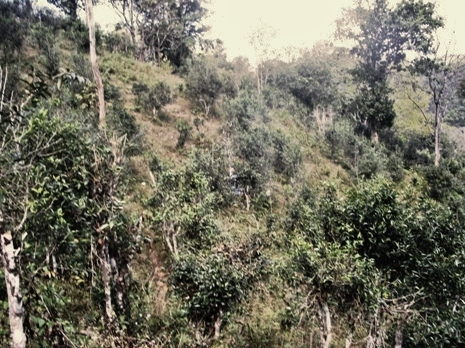 Wild “tea garden” in north Thailand („ShanTea“): biodiverse less photogenic, but the best for health and environment
Wild “tea garden” in north Thailand („ShanTea“): biodiverse less photogenic, but the best for health and environment